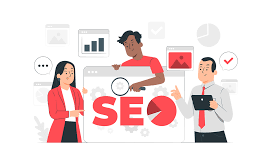Launching a Shopify store is an exciting endeavor, but it’s crucial to avoid common mistakes that can hinder your store’s growth and success. A well-executed launch can set the stage for long-term profitability, while common missteps can lead to slow sales, frustrated customers, and a struggle to stand out in the crowded e-commerce marketplace. Here, we explore the 10 most common mistakes new Shopify store owners make, along with tips on how to avoid them.
1. Skipping Detailed Market Research
Before launching, conducting in-depth market research is essential. Understanding your target market helps you tailor products, pricing, and marketing strategies to their preferences. Skipping this step often results in ineffective marketing efforts and low conversion rates.
Key points to consider:
- Identify your audience: Are you targeting millennials, Gen Z, or an older demographic? Their buying behavior varies significantly.
- Analyze competitors: Study their pricing, product range, and marketing approach to find gaps you can capitalize on.
- Stay updated on trends: Shopify is a dynamic platform, and staying current helps you offer relevant products.
2. Neglecting to Create a Unique Value Proposition
A Unique Value Proposition (UVP) distinguishes your store from others. A common mistake is to have vague or generic messaging that doesn’t convey the unique benefits of shopping with you.
Tips for an effective UVP:
- Be specific: Highlight benefits that directly appeal to your target market.
- Keep it short and clear: Your UVP should be clear at a glance on your homepage.
- Incorporate it into all customer touchpoints: From social media bios to email signatures, ensure your UVP is everywhere.
3. Overlooking Mobile Optimization
With over half of online shoppers using mobile devices, optimizing for mobile is no longer optional. Neglecting mobile responsiveness can lead to a high bounce rate and lost sales.
Best practices for mobile optimization:
- Test your store on multiple devices: Make sure the design is responsive and the site loads quickly.
- Simplify navigation: A cluttered mobile layout frustrates users, leading them to abandon your site.
- Enable one-click checkout: Simplify the purchasing process to increase conversion rates.
4. Using Low-Quality Product Images
First impressions matter, and blurry, low-quality images can give a poor perception of your products. Visual appeal plays a crucial role in online shopping, as customers can’t physically touch the items.
Guidelines for quality product images:
- Invest in professional photography: High-quality images with good lighting boost credibility.
- Use multiple angles and zoom options: Give customers a 360-degree view of your products.
- Optimize for fast loading: Compress images to balance quality with loading speed.
5. Ignoring SEO Optimization
SEO is crucial for attracting organic traffic. Shopify store owners often neglect SEO, focusing solely on paid advertising, which can limit their growth potential.
Steps for better SEO:
- Optimize product descriptions: Use keywords that customers search for, naturally embedded in your descriptions.
- Use alt text on images: This helps your products appear in Google Image search results.
- Improve site structure: Ensure easy navigation with a clear hierarchy to help search engines index your store efficiently.
6. Poor Navigation and Cluttered Design
A cluttered website or complicated navigation frustrates visitors and leads them to leave. Your store’s layout should be intuitive and user-friendly, allowing customers to find products quickly.
Tips for a streamlined design:
- Limit menu items: Avoid overwhelming users with too many options.
- Utilize filters and categories: Allow users to narrow down their search efficiently.
- Reduce clutter on each page: Focus on high-quality images and succinct product information.
7. Neglecting to Build an Email List
Many store owners focus solely on social media marketing, overlooking the power of email marketing. Email lists are essential for long-term customer retention and direct marketing.
Strategies for email list building:
- Offer an incentive for sign-ups: Discounts, exclusive access, or free guides can encourage sign-ups.
- Segment your list: Send tailored messages based on customer behavior and preferences.
- Use automated emails: Set up abandoned cart emails, welcome series, and product recommendations to engage customers.
8. Not Establishing Trust Signals
Building trust is vital, especially for new online stores. Customers need assurance that your store is legitimate and that their transactions are secure.
Ways to establish trust:
- Display customer reviews and testimonials: Real feedback adds authenticity and can boost confidence in your products.
- Use secure payment gateways: Clearly display trust badges for payment security.
- Create a professional-looking website: Invest in a well-designed website that reflects credibility.
9. Not Testing Your Checkout Process
A complicated or error-prone checkout process can lead to high cart abandonment rates. Testing the checkout experience helps identify potential obstacles that may deter customers from completing their purchase.
Steps to ensure a smooth checkout:
- Enable guest checkout: Many shoppers prefer not to create an account.
- Minimize form fields: Only request essential information to streamline the process.
- Run usability tests: Perform tests to detect and resolve any bugs or confusion in the checkout process.
10. Failing to Set Up Analytics
Analytics are essential for tracking your Shopify Store performance and understanding customer behavior. Neglecting analytics can lead to missed opportunities and ineffective marketing strategies.
Key metrics to track:
- Traffic sources: Identify which channels drive the most traffic to your store.
- Conversion rates: Track the percentage of visitors who complete a purchase.
- Cart abandonment rates: Monitor and address the reasons customers abandon their carts.
 The Random Collective Where Curiosity Meets Creativity
The Random Collective Where Curiosity Meets Creativity





